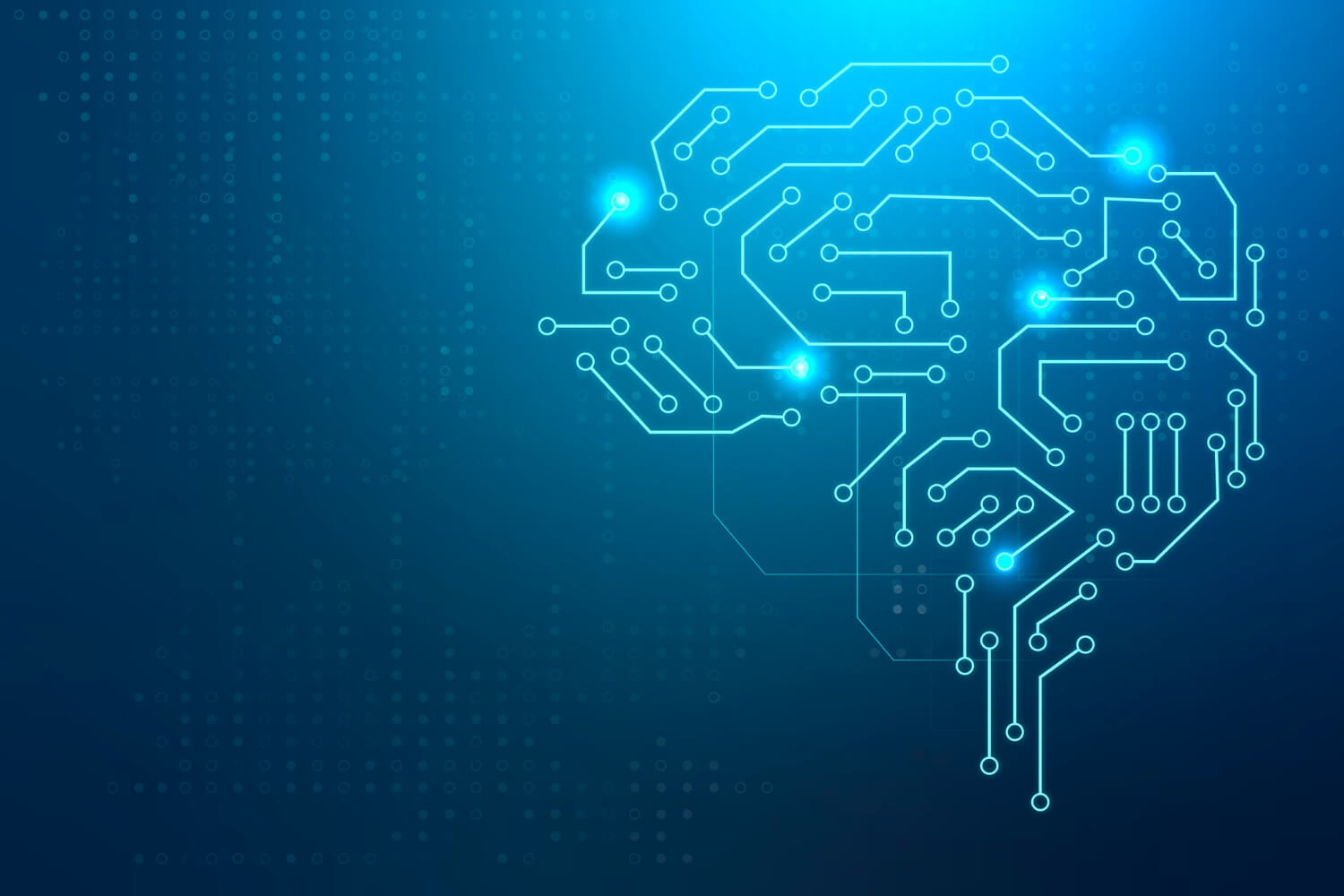Artificial intelligence (AI) surrounds us in our daily lives, whether we are aware of it or not. There are many myths surrounding AI systems, but we will try to unveil some of the mysteries that sometimes envelop them.
¿How to learn Artificial Intelligence?
What is Artificial Intelligence?
There are many definitions of what AI is and what it is not. But in general, it could be defined as a discipline that aims to enable machines to emulate the way our human mind functions.
On one hand, for tasks that we consider intelligent, such as reasoning logically, drawing conclusions, or making plans. And on the other hand, for tasks that are not so intelligent, such as controlling our body, allowing us to walk on uneven terrain, or speaking.

Artificial intelligence is often associated with machine learning, but the reality is that artificial intelligences are not limited to this discipline. On the contrary, machine learning allows a machine to learn from experience, whether it is labelled data or an interactive world.
The simple definition of rules or instructions allows a computer to make its own decisions autonomously. This type of programming is called aprioristic or explicit. In some cases, it is necessary for performing simple tasks or tasks that require reliability that the probabilistic nature of machine learning processes does not always have. On the other hand, there is deep learning, which is the evolution of this first type.
AI is the New Space Race
Humanity, driven by the need for innovation and creation, is highly focused on the growth of this discipline. It is constantly seeking to expand the capabilities of AI systems.
No world power does not show its computational muscle when publishing a new model that is capable of doing more than the previous one, with a large number of training parameters that seek to outperform the competition. As an example, China published in June 2021 the largest AI model ever trained in. This is called Wu Dao 2.0 (which has a staggering 1.75 billion training parameters).
Do you know how to study Artificial Intelligence but not where?
At Nuclio Digital School, you have the solution!
Types of Artificial Intelligence
These models still represent the first stage in the types of artificial intelligence. They are defined based on their intended use and how they are expected to help humanity progress. These three types are:
- Artificial Narrow Intelligence (ANI)
- Artificial General Intelligence (AGI)
- Universal Artificial Intelligence or Super Artificial Intelligence (UAI)
Artificial Narrow Intelligence
Currently, the type of AI we have been able to build is ANI. It is the type of AI that is used for repetitive tasks and is limited to being better than humans in a specific area or task.
Many experts in the field, such as George Hinton, a professor at the University of Toronto and one of the fathers of neural networks, comment that certain types of jobs will disappear at any moment. These jobs will disappear when AI can solve the problem that one or several humans perform, in less time and with more reliability.
General Artificial Intelligence
General or universal artificial intelligences are something that is not yet known when they will arrive. Nevertheless, different currents regarding this matter give it a decade or half a century to become a reality.
The first one would be an artificial intelligence that would equal or exceed the average human intelligence in any intellectual task that a human being is capable of performing, and the second one would surpass the capacity of the brightest minds of humanity. Examples of such artificial intelligence exist in books, TV series, and science fiction movies.
Know the details about
Examples of Artificial Intelligence
Simple examples of artificial intelligence can be found in your mobile devices, with virtual assistants or chatbots that answer questions or provide solutions to doubts. They can also perform actions that we communicate to them verbally.
On the other hand, we have risk evaluation algorithms when approving a microcredit application and natural language processing. There are also autonomous vehicles and advancements in robotics that allow an AI-powered robot to walk or perform tasks.
Another example of narrow AI that has revolutionized the world of science is AlphaFold2, created by Google’s DeepMind, where artificial intelligence has solved (or is on the way to solving) a problem in computational biology related to 3D protein folding from a sequence of amino acids that is more than 50 years old.
This happened at a conference in November 2020 and is considered a WOW moment for Artificial Intelligence, similar to when a deep neural network outperformed all competitors in the ImageNet image classification challenge in 2012, which is owned by Stanford University.
AlphaFold2 has dramatically revolutionized a field of research where artificial intelligence systems had not been incorporated yet.

One of the challenges we face when considering whether artificial intelligence can solve a certain task or not is the uncertainty of whether what we intend to achieve is possible or not.
In general, three conditions must be met for an artificial intelligence system to efficiently solve a problem or task, surpassing human capabilities. These three conditions are:
- The question (or task to be solved) must be clearly defined. It cannot be a generic question.
- There is a large dataset that has been validated by domain experts or individuals of solving this task.
- A calculation rule is defined to measure the error that the artificial intelligence system is making when performing the task or answering the question we want to solve.
IMAGENET
In the case of ImageNet, the problem was well-defined because the goal was to identify objects (a total of 1000 different classes) in a set of images.
The dataset collected by Stanford University over 10 years, called ImageNet, contains 1.2 million labeled images of those 1000 objects.
With that amount of data, artificial intelligence can learn a lot and quickly. In the case of predicting whether the object that appears in the image is correct or not, the error can be easily calculated. These three ingredients (question, data, error) are clear, so it was a matter of time before the machine surpassed humans.

ALPHAFOLD2
The same thing happened with AlphaFold2. The question was very clear: how to obtain a 3D structure from a list of amino acids, with 170,000 examples validated by the world’s top protein experts, and a specific metric to quantify how much error the AI was making.
With these three premises fulfilled, successful artificial intelligence was obtained in this field.
An interesting fact is that DeepMind released its AlphaFold1 without any computational biologists on their team (this was in 2018, just in the previous edition of the CASP conference).
However, it was able to apply knowledge in neural networks and experience in computer vision projects with the question, amounts of data, and the way to measure error and outperform other researchers who presented their proposals for predicting the 3D shape of the folded protein.
Data science and artificial intelligence
AI is here to stay and evolve. How far it will go or when we will be able to see Artificial General Intelligence is something we cannot predict. However, we can lay the groundwork for what we want to achieve or what it should bring to our lives as human beings.
The importance of data, properly formulated questions, and ways to measure how much we are wrong open the doors for computers to take over countless daily tasks. This is something that is completely in our hands.




